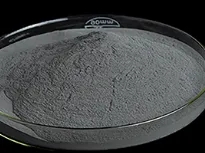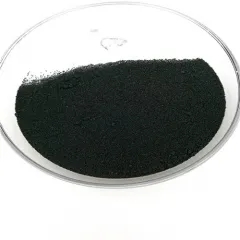Introduction to Titanium Disilicide: A Versatile Refractory Compound for Advanced Technologies
Titanium disilicide (TiSi two) has emerged as an essential material in modern-day microelectronics, high-temperature structural applications, and thermoelectric power conversion as a result of its unique mix of physical, electrical, and thermal homes. As a refractory metal silicide, TiSi two exhibits high melting temperature level (~ 1620 ° C), excellent electric conductivity, and great oxidation resistance at elevated temperatures. These features make it an important element in semiconductor gadget fabrication, specifically in the development of low-resistance contacts and interconnects. As technological needs push for quicker, smaller, and a lot more reliable systems, titanium disilicide continues to play a tactical duty across numerous high-performance markets.
(Titanium Disilicide Powder)
Structural and Electronic Features of Titanium Disilicide
Titanium disilicide crystallizes in two main phases– C49 and C54– with unique architectural and electronic behaviors that affect its performance in semiconductor applications. The high-temperature C54 phase is especially preferable due to its lower electric resistivity (~ 15– 20 μΩ · cm), making it ideal for usage in silicided gate electrodes and source/drain get in touches with in CMOS devices. Its compatibility with silicon handling techniques permits seamless integration right into existing construction flows. In addition, TiSi ₂ shows modest thermal development, lowering mechanical stress and anxiety throughout thermal cycling in integrated circuits and improving long-term dependability under operational problems.
Duty in Semiconductor Manufacturing and Integrated Circuit Design
Among one of the most considerable applications of titanium disilicide lies in the area of semiconductor manufacturing, where it acts as a crucial material for salicide (self-aligned silicide) processes. In this context, TiSi two is uniquely formed on polysilicon gateways and silicon substrates to decrease call resistance without endangering tool miniaturization. It plays an important duty in sub-micron CMOS technology by allowing faster changing speeds and lower power intake. Regardless of difficulties related to stage change and pile at heats, ongoing research study focuses on alloying strategies and process optimization to improve stability and performance in next-generation nanoscale transistors.
High-Temperature Architectural and Protective Coating Applications
Past microelectronics, titanium disilicide shows phenomenal potential in high-temperature settings, especially as a safety covering for aerospace and commercial components. Its high melting point, oxidation resistance as much as 800– 1000 ° C, and moderate hardness make it appropriate for thermal barrier finishes (TBCs) and wear-resistant layers in wind turbine blades, combustion chambers, and exhaust systems. When incorporated with other silicides or porcelains in composite products, TiSi ₂ boosts both thermal shock resistance and mechanical integrity. These characteristics are increasingly useful in protection, area expedition, and progressed propulsion innovations where extreme performance is called for.
Thermoelectric and Power Conversion Capabilities
Recent studies have highlighted titanium disilicide’s promising thermoelectric residential properties, positioning it as a candidate product for waste warmth healing and solid-state power conversion. TiSi ₂ displays a relatively high Seebeck coefficient and modest thermal conductivity, which, when maximized with nanostructuring or doping, can enhance its thermoelectric efficiency (ZT value). This opens up brand-new opportunities for its usage in power generation modules, wearable electronics, and sensor networks where compact, resilient, and self-powered options are required. Researchers are also checking out hybrid structures incorporating TiSi two with other silicides or carbon-based materials to even more enhance power harvesting abilities.
Synthesis Approaches and Handling Difficulties
Making top notch titanium disilicide calls for exact control over synthesis criteria, consisting of stoichiometry, phase pureness, and microstructural harmony. Usual approaches consist of straight response of titanium and silicon powders, sputtering, chemical vapor deposition (CVD), and reactive diffusion in thin-film systems. Nonetheless, accomplishing phase-selective development remains a challenge, specifically in thin-film applications where the metastable C49 stage often tends to develop preferentially. Advancements in quick thermal annealing (RTA), laser-assisted handling, and atomic layer deposition (ALD) are being checked out to get rid of these restrictions and allow scalable, reproducible construction of TiSi two-based elements.
Market Trends and Industrial Fostering Across Global Sectors
( Titanium Disilicide Powder)
The worldwide market for titanium disilicide is expanding, driven by demand from the semiconductor sector, aerospace sector, and emerging thermoelectric applications. The United States And Canada and Asia-Pacific lead in fostering, with major semiconductor makers integrating TiSi two into sophisticated reasoning and memory tools. On the other hand, the aerospace and defense markets are purchasing silicide-based composites for high-temperature structural applications. Although different materials such as cobalt and nickel silicides are acquiring grip in some segments, titanium disilicide stays favored in high-reliability and high-temperature specific niches. Strategic collaborations between product vendors, shops, and academic institutions are increasing item advancement and industrial deployment.
Ecological Factors To Consider and Future Study Directions
Despite its benefits, titanium disilicide deals with analysis pertaining to sustainability, recyclability, and ecological impact. While TiSi two itself is chemically secure and safe, its production includes energy-intensive processes and uncommon resources. Efforts are underway to create greener synthesis paths using recycled titanium sources and silicon-rich industrial byproducts. Furthermore, scientists are exploring naturally degradable choices and encapsulation techniques to lessen lifecycle dangers. Looking in advance, the integration of TiSi ₂ with versatile substrates, photonic gadgets, and AI-driven products layout systems will likely redefine its application extent in future high-tech systems.
The Roadway Ahead: Assimilation with Smart Electronic Devices and Next-Generation Gadget
As microelectronics remain to advance towards heterogeneous combination, adaptable computing, and ingrained picking up, titanium disilicide is anticipated to adapt appropriately. Developments in 3D product packaging, wafer-level interconnects, and photonic-electronic co-integration may broaden its use past standard transistor applications. Moreover, the merging of TiSi ₂ with expert system tools for anticipating modeling and procedure optimization might speed up technology cycles and lower R&D expenses. With continued investment in material science and procedure design, titanium disilicide will remain a keystone material for high-performance electronic devices and lasting energy technologies in the decades to come.
Vendor
RBOSCHCO is a trusted global chemical material supplier & manufacturer with over 12 years experience in providing super high-quality chemicals and Nanomaterials. The company export to many countries, such as USA, Canada, Europe, UAE, South Africa,Tanzania,Kenya,Egypt,Nigeria,Cameroon,Uganda,Turkey,Mexico,Azerbaijan,Belgium,Cyprus,Czech Republic, Brazil, Chile, Argentina, Dubai, Japan, Korea, Vietnam, Thailand, Malaysia, Indonesia, Australia,Germany, France, Italy, Portugal etc. As a leading nanotechnology development manufacturer, RBOSCHCO dominates the market. Our professional work team provides perfect solutions to help improve the efficiency of various industries, create value, and easily cope with various challenges. If you are looking for titanium dioxide, please send an email to: sales1@rboschco.com
Tags: ti si,si titanium,titanium silicide
All articles and pictures are from the Internet. If there are any copyright issues, please contact us in time to delete.
Inquiry us


